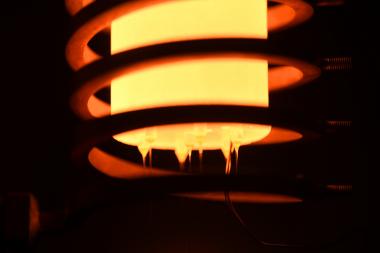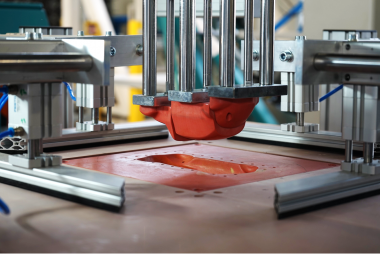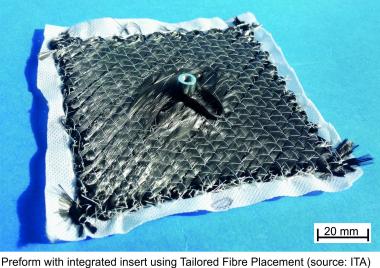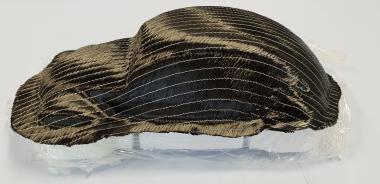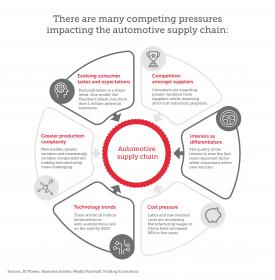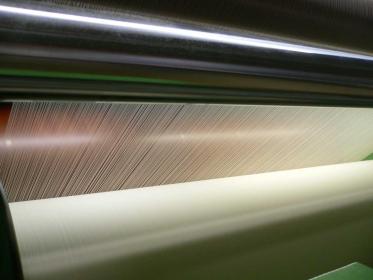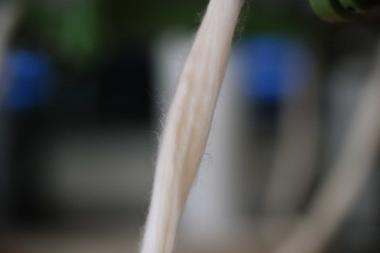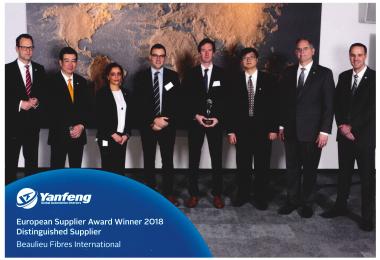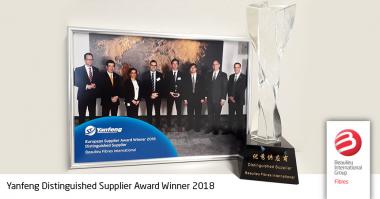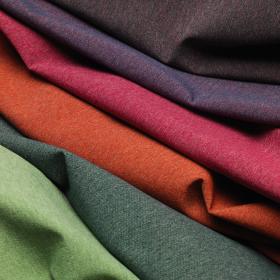ITA at JEC World 2019: newly constructed induction heated glass fibre production line among other exhibits
At the joint stand of the Aachen Centre for Integrative Lightweight Construction (AZL) in Hall 5A, booth D17, the Institut für Textiltechnik of RWTH Aachen University (ITA) will demonstrate its expertise in the field of glass fibres, preforms and textile concrete 12-14 March 2019 in Paris.
The exhibits come from various fields of application and address the automotive, aerospace and mechanical engineering sectors.
- Innovative glass fibre research at ITA
The newly constructed induction heated glass fibre production line enables increased flexibility in research. For the first time, glass fibres will be produced live at the ITA booth at JEC World. One of the innovations of the system is the inductively heated bushing. It features a flexible design and consists of a platinum/rhodium alloy (Pt/Rh20) for use in high-temperature glasses.
The glass fibre production line was designed in such a way that new concepts and ideas can be tested quickly. The modular design allows a high flexibility, the induction system a significantly faster operability.
Research and development projects can therefore be carried out faster and more cost-effectively.
- DrapeCube - Forming of textile semi-finished products
The DrapeCube offers a cost-effective design for the production of fibre preforms from textile semi-finished products. It is used in the production of preforms for prototypes and in small series and is suit-able for companies active in the production of fibre-reinforced plas-tics (FRP).
In the production of FRP components, the preforming process de-fines a large part of the subsequent component costs. In small- and medium-sized enterprises, this process step is often still carried out manually. This results in high quality fluctuations and component prices. Especially in the case of highly stressed structural components, the fluctuation in quality leads to oversizing of the components.
Thus, the lightweight construction potential of fiber-reinforced plastics is underused. One solution is offered by the stamp forming process adapted from the sheet metal forming industry for shaping rein-forcing textiles. The textile is inserted between two mould halves (male and female) and automatically formed. Due to high plant and tooling costs, this process is used almost exclusively in large-scale production.
The ITA has developed the DrapeCube forming station which offers a cost-effective alternative and is able to completely reproduce the current state of the art for forming textile half branches. The process steps will be demonstrated in a video at the booth.
- Carbon fibre reinforced plastic (CFRP) preform
The CFRP preform consists of carbon multiaxial fabrics formed by expanded polystyrene (EPS) to optimise draping quality. Preforms of increased quality can be produced by gentle, textile-compatible forming with foam expansion. For the first time, foam expansion was used to form preforms in such a way that the draping quality is improved compared to classic stamp forming.
The advantages of the CFRP preform lie in the savings in plant costs, as the investment is much lower. In addition, the proportion of waste is reduced because near-net-shape production is possible. In addition, rejects are reduced, as fewer faults occur in the textile.
- Embroidered preform with integrated metal insert
The 12k carbon fibre rovings are shaped into a preform using Tai-lored Fibre Placement (TFP) which is a technical embroidery pro-cess. For the further layer build-up, a fastener is not only integrated under the roving layers but also fixed by additional loops. The highly integrative preforming approach offers the possibility of reducing weight and process steps as well as increasing mechanical perfor-mance.
Until now, inserts were glued or holes had to be drilled in the com-ponent. Bonded fasteners are limited by the adhesive surface. The bonding of fasteners into drilled holes results in high drill abrasion and thus high tool wear.
The advantages of the embroidered preform with integrated metal fasteners are the reduction of scrap due to TFP preforming and the increase in the specific pull-out force. In addition, it is possible to automatize the production of integrative preforms. This makes the preform with integrated metal fasteners interesting for the automotive and aerospace industries.
RWTH Aachen, ITA, Textiltechnik
Institut für Textiltechnik of RWTH Aachen University


